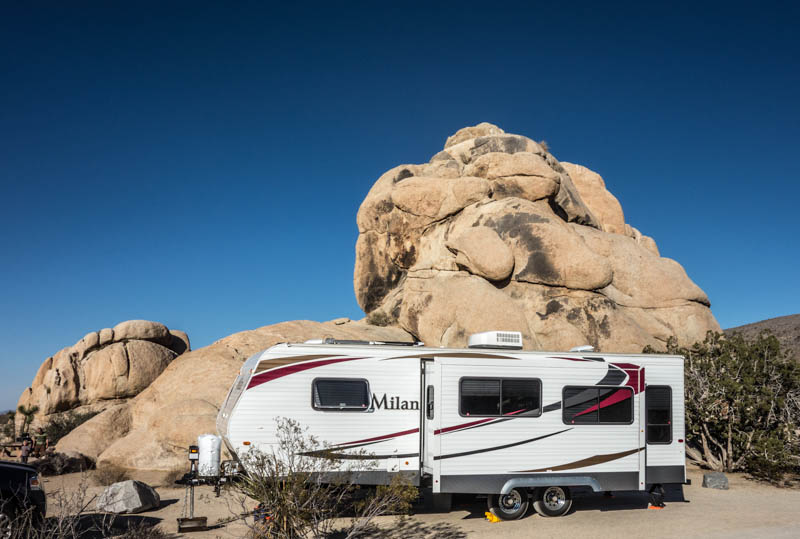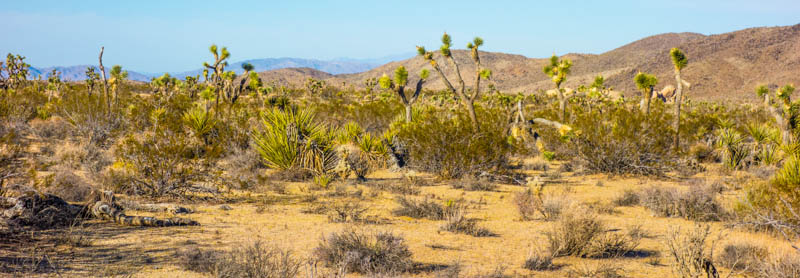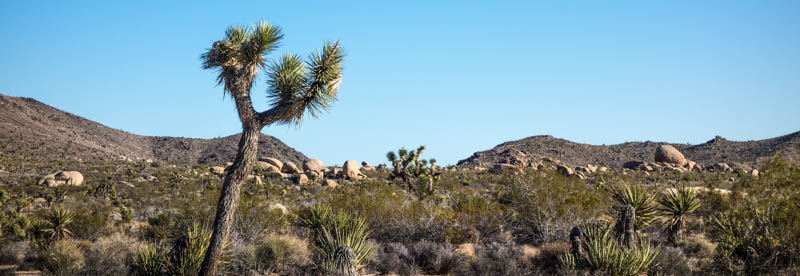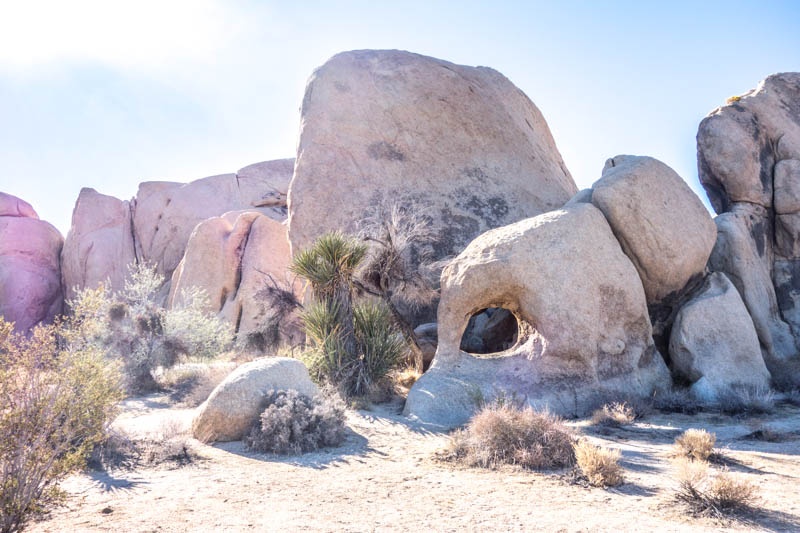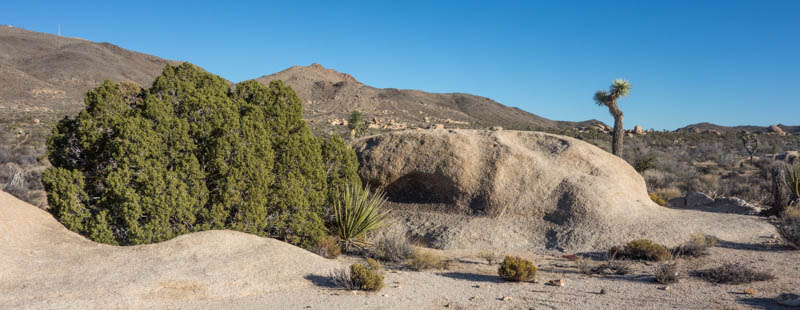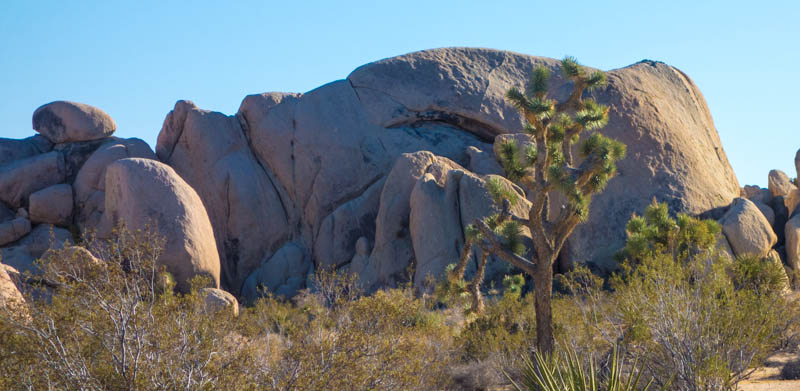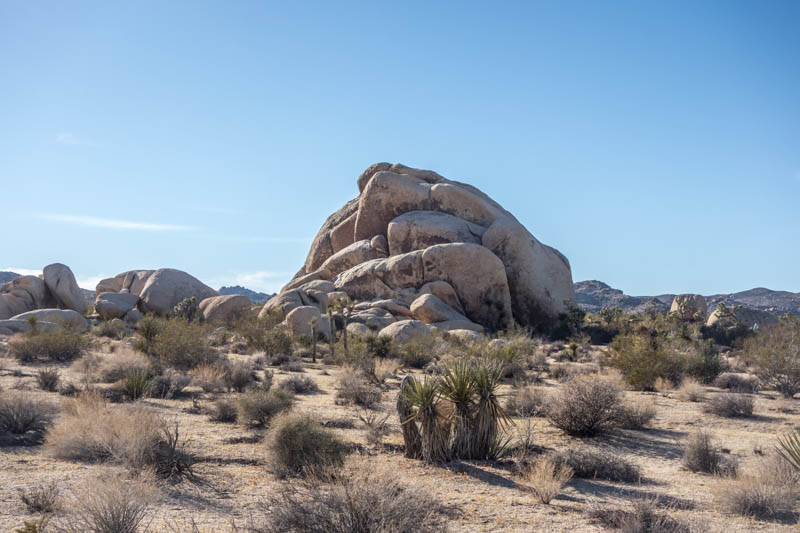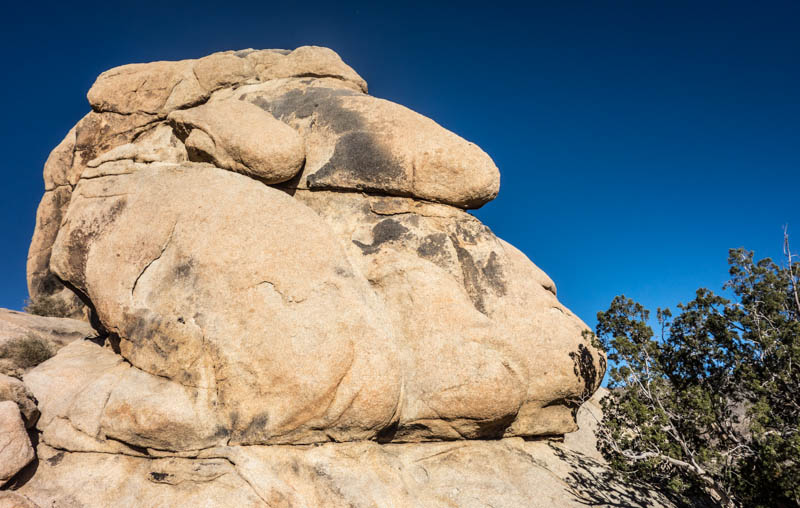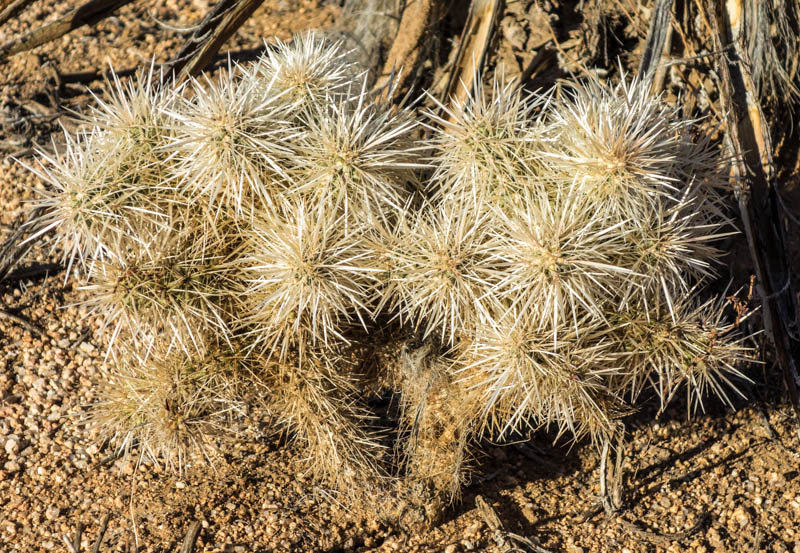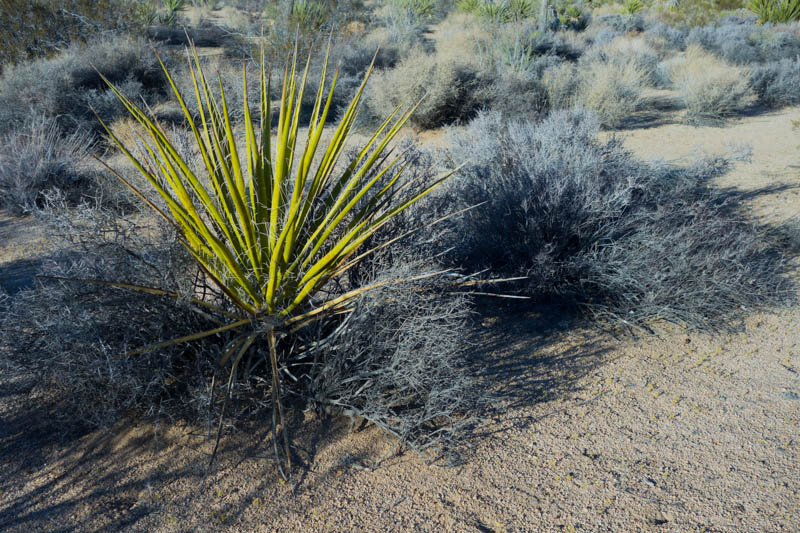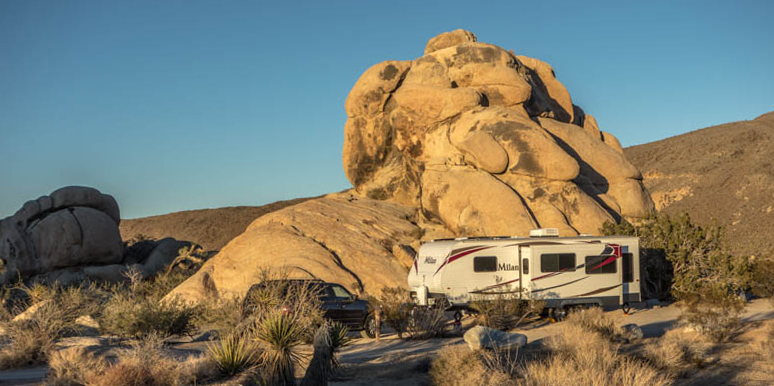Got back late last night from our 5th camping trip in as many weeks. As we did the previous two weeks, we spent time in the desert. Unlike our past two trips in the lower desert in Anza Borrego and Joshua Tree, we headed to the high desert.
There are several good reasons why we are spending so much time in the desert. First and foremost is the weather. While most of the country is getting cold fall weather, we are enjoying daytime temperatures ranging in the 70’s and 80’s. Fortunately for us we are close to thousands of square miles of desert. California has three major deserts.
THE DESERTS OF CALIFORNIA
Colorado Desert
This is the desert we live in and camp in whenever possible. It is comprised of 7 million acres, or almost 11,000 square miles. What is unique about this California desert is two rainy seasons each year (winter and late summer), whereas the other California deserts have only one rainy season. Even with two rainy seasons, average yearly precipitation is less in the Colorado Desert. Frost is rare and average daily summertime temperatures are higher than those of the higher elevation deserts in California. Most of the Colorado Desert lies at elevations under 1,000 feet and is often called the “Low” Desert.
Mojave Desert
The Mojave Desert is generally between 2,000 and 5,000 feet elevation, however Death Valley at 282 feet below sea level is in the Mojave. Most of the Mojave lies in California, but extends into parts of Nevada and Arizona. The Mojave encompasses over 14 million acres, or about 22,000 square miles. We call this the “high” desert.
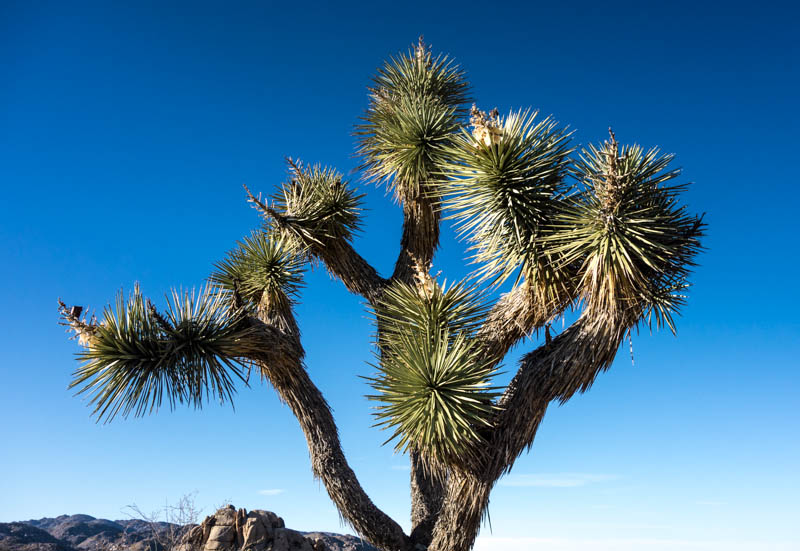
The Mojave is defined by the presence of the Joshua Tree. If you see Joshua Trees, you are in the Mojave Desert. The lack of these trees does not necessarily mean you are not in the Mojave.
Great Plains Desert
East of the Sierra Nevada, this desert receives most of its precipitation as snow. Whereas we have tens of thousands of acres of within an hour of our house in the Colorado and Mojave Deserts, the Great Plains Desert is a drive of several hours.
Of all the California Deserts, we spend the least time in the Great Plains. For the time it takes to drive there, we are usually tempted and enticed by the pull of the Sierra Nevada. But the Sierra is like a mistress; the Desert is a life-long companion.
TEMPTATION DEFINED
Aside from great weather, there are some compelling reasons to spend time in the desert. Deserts are “clean.”
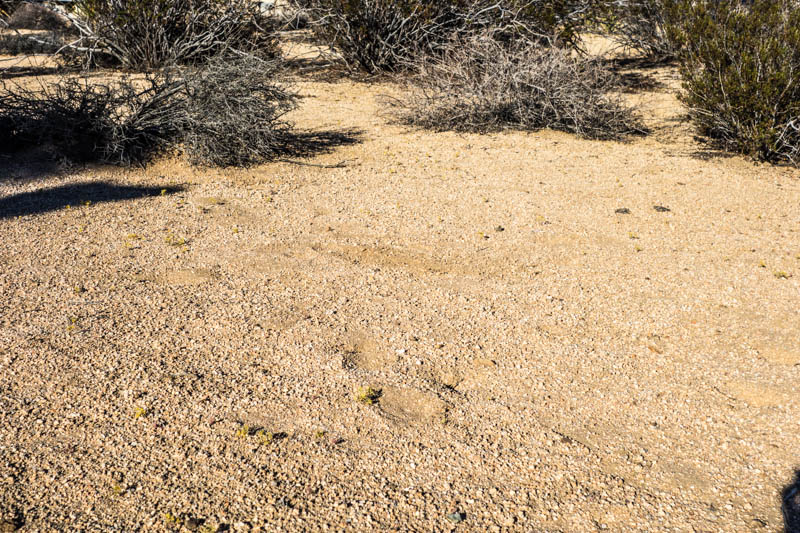 Vegetation is usually sparse and there is generally little rotting plant life.
Vegetation is usually sparse and there is generally little rotting plant life.
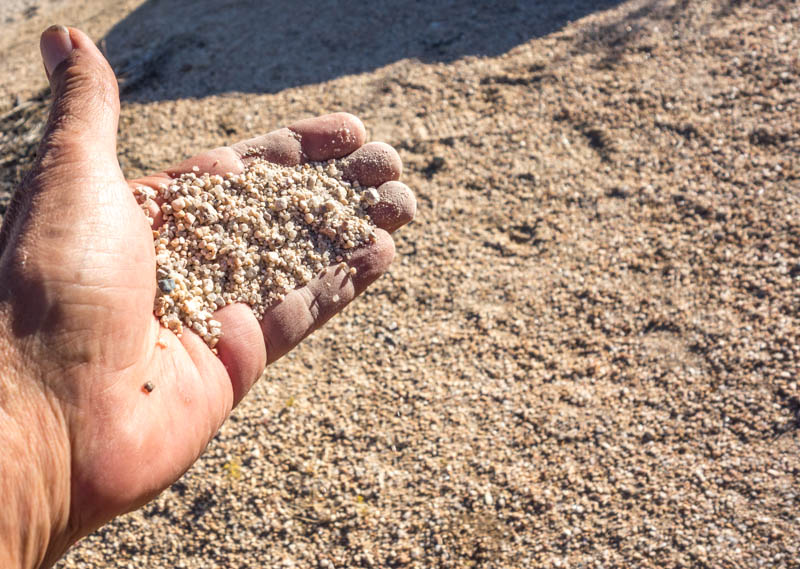 Pick up a handful of sand and it looks and feels clean. Not a lot of extraneous material in it.
Pick up a handful of sand and it looks and feels clean. Not a lot of extraneous material in it.
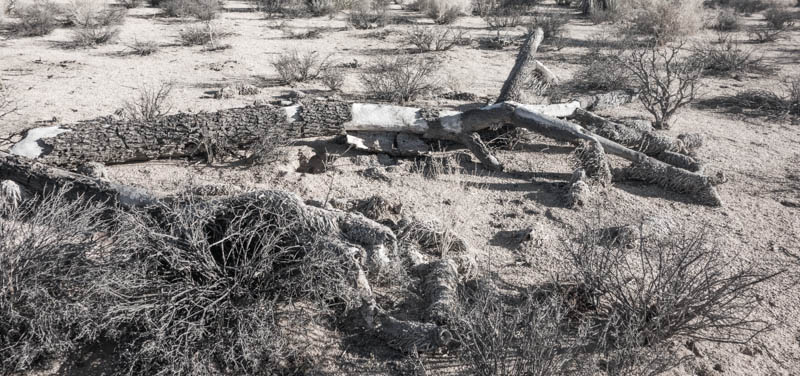 The desert is efficient. Only the strong survive. This goes for everything. Strong often means the ability to adapt.
The desert is efficient. Only the strong survive. This goes for everything. Strong often means the ability to adapt.
The openness of deserts provides grand vistas.
The world is open to you – you can see it everywhere. You don’t have to climb a peak to get out of your immediate environment to see a vast expanse. To me the openness invites optimism. It demands exploration.
WHERE DID THE BIG ROCKS COME FROM?
Rocks and boulders aren’t covered by trees and shrubs – they stand out and proclaim I am here for your pleasure.
The rocks were formed more than a million years ago, from molten lava that oozed up near, but below, the surface of the earth. Over millennia, ground water seeped down and eroded the rock formations. As the earth experienced global warming tens of thousands of years ago, the land became a desert. Flash floods slowly washed away the upper crust of the land exposing the rock formations.
The desert requires you to become a better hiker. You must be smarter, more skillful, and more experienced. It requires the best in us to survive.
And most importantly, the desert is solitude.

